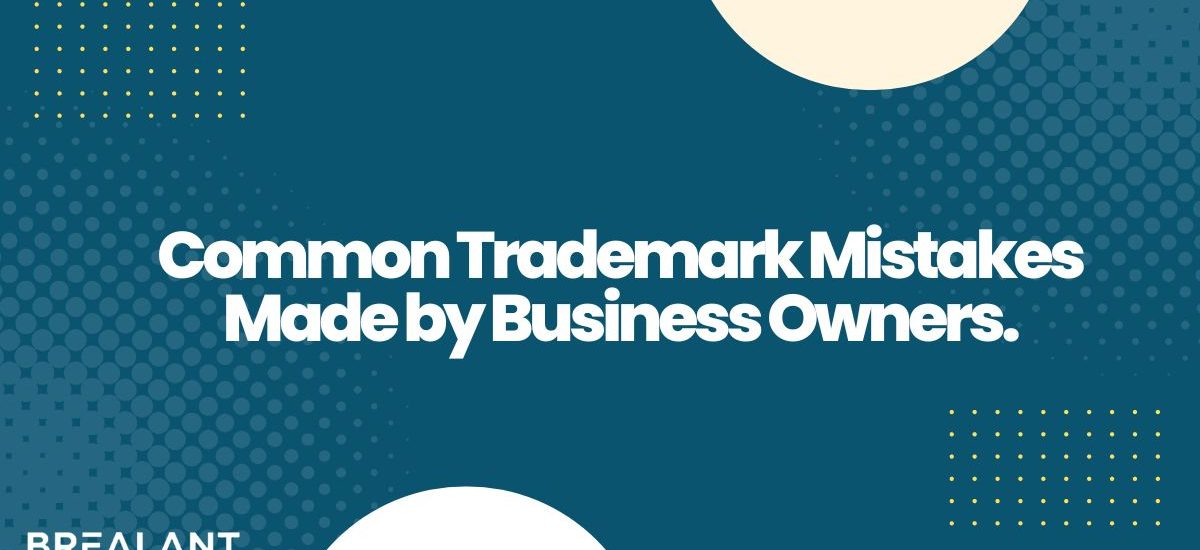Protecting your trademark is essential, but it’s not easy. No one wants to have their valuable brand tarnished by mistake. Like anything else, some common mistakes can cost you dearly in terms of trademark protection. Trademark mistakes can happen to anyone, regardless of experience. You must be aware of the dangers of using someone else’s name and logo without their permission so that you can avoid them.
A trademark is a unique name or symbol representing the owner of a particular property right – in this case, the trademark gives its owner exclusive rights to use it for commerce or advertising. To protect their trademarks, businesses must ensure that their marks are properly registered with the US Patent and Trademark Office (USPTO). Registration makes the mark public and available for use in commerce.
What are the common mistakes made during trademarking?
There are several steps businesses need to take to protect their trademarks. But if these steps are not followed precisely, adverse consequences may result. Here are five of the most common trademark mistakes:
- Failing to filename a mark: Any company that uses a trademark should complete the federal registration process. A trademark provides the company with a strong legal base and aids in developing a strong brand, even though it could take some time. The United States has a federal law called the Lanham Act forbids trademark infringement. Both companies that register their trademarks and those that do not are protected by the Act.
- Low-grade brand names: For a business to successfully trademark itself, picking a unique name that conveys the brand’s essence is vital. The brand name needs to stand out and appeal to the company’s target market. The USPTO frequently rejects generic trademark registration requests from businesses. However, the authority will also accept more detailed brand names. For successful registration, the business owner must pick a strong name that is both generic and simple enough.
- Making improper use of symbols: Many think including the ™ mark will protect their trademarks. The ™ emblem only provides a small amount of protection, though. It defends the company’s operational boundaries’ physical limits. Additionally, suppose you don’t correctly register a trademark. In that case, another company may be granted legal protections that could limit the expansion of your business if they file to register the same trademark for comparable goods and/or services. The business can then add the ® sign to its brand after registration.
- Registering the mark without proper research: Before registering a trademark, businesses should do a thorough search. This check will ensure the mark is not already used by another business for identical products or services. The Trademark Electronic Search system should be used to check if any competing businesses use similar trademarks for competing goods and/or services.
- Using a confusingly similar mark, lack of regular research: The business is obligated to safeguard its trademarks. Following registration and approval, the business should conduct routine searches to ensure no other company is abusing its trademark rights. Failure to protect a company’s trademark can have several adverse effects, including a decline in the worth of the brand and loss of trademark rights.
Should we hire an attorney for registering a trademark?
Although the law does not require firms operating within the United States to hire an attorney for mark registration, the procedure can be difficult for those with little to no legal training. A registration denial could result from failing to comprehend and adhere to the proper procedure, among other things. Additionally, the domicile address must be provided for all filings by trademark applicants or registered users. If they choose not to engage an attorney to represent them, they must be ready to serve in that capacity. However, businesses based outside the US must work with an attorney to register a trademark on their behalf.
If you’re a business owner, you must be aware of the most common trademark mistakes. You can avoid them and protect your valuable trademarks by learning about them. Trademark infringement can be a costly and time-consuming legal process. Therefore, it’s crucial to ensure that you are using a trademark in a legally permissible way.
Conclusion
Owning a trademark is an essential step in protecting your business. It can help you protect your brand and ensure that your products are easily recognized. However, if you don’t take your trademark rights seriously, you may find yourself at the mercy of another business. Trademarks are a cornerstone of the business and are often treated patriotically. But, like any other significant asset, trademarks can be handled improperly and become damaging liabilities.
Disclaimer-Brealant provides access to independent attorneys and self-service tools, is not a law firm, and does not provide legal advice.










